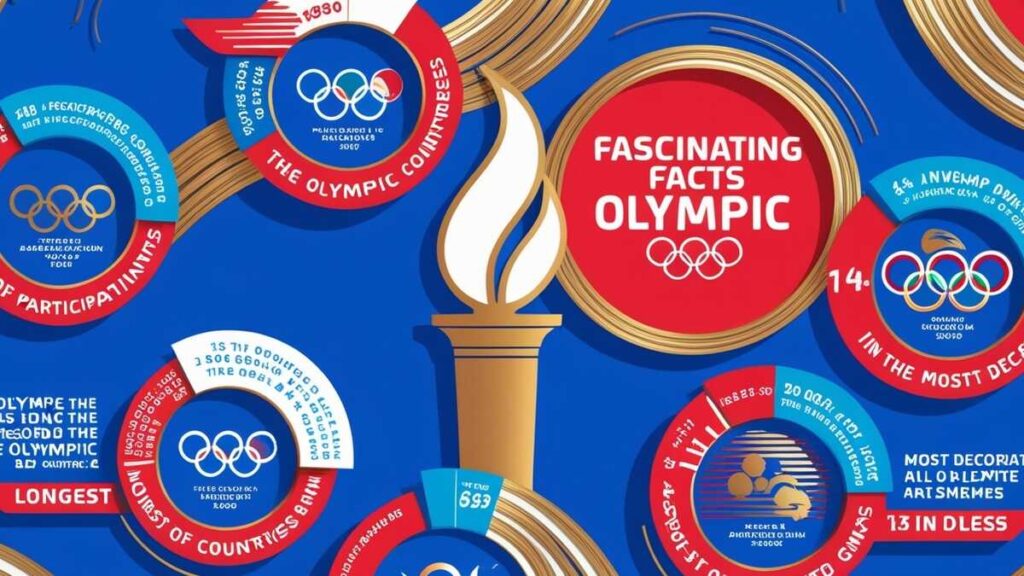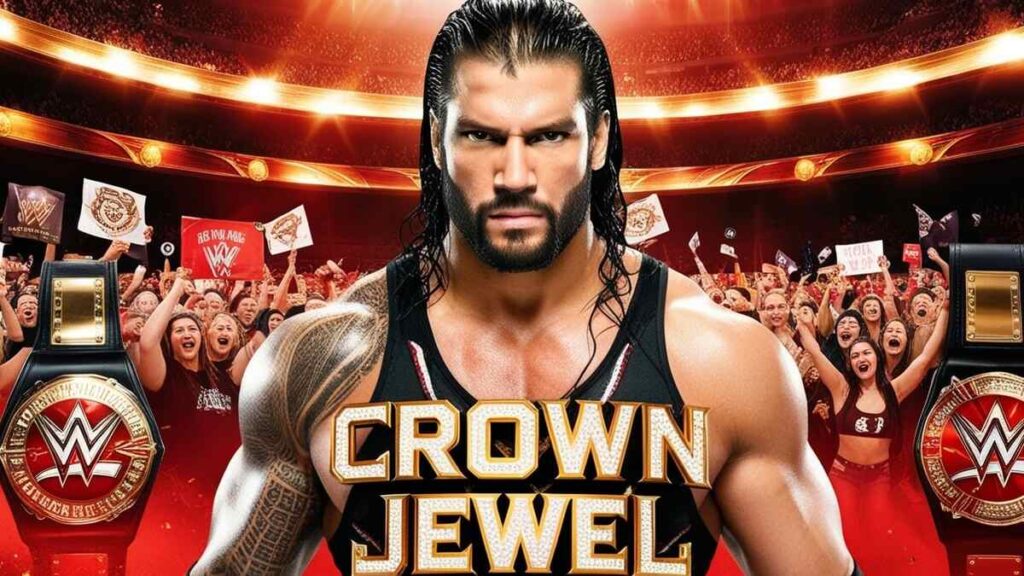Introduction
The Olympic Games are a treasure trove of history, inspiring tales, and some downright unbelievable facts. This global phenomenon goes far beyond its sporting achievements, with quirky traditions, dramatic stories, and fascinating history. Dive in as we explore 15 unbelievable facts about the Olympic Games that will intrigue you.
- Introduction
- The Ancient Olympics Were a Religious Festival
- The Olympic Flame Never Goes Out
- The First Modern Olympics Had No Gold Medals
- The Olympics Used to Have Strang Sports That Consisted of Tug of War
- Women Were Banned in the Ancient Olympics
- The Olympic Rings Are Packed With Meaning
- The Longest Olympic Event Took 54 Years to Finish
- Athletes Used to Cheat with Wine and Mushrooms
- The Olympic Villages Are Cities in Themselves
- The First Televised Olympics Changed Everything
- Athletes Must Follow Strict Rules—Even for Uniforms
- The Olympic Games Have Been Canceled Three Times
- The Olympic Mascots Are Quirky and Fun
- The Olympic Truce Dates Back to Ancient Times
- The Cost of Hosting Is Astronomical
- Conclusion
The Ancient Olympics Were a Religious Festival
The roots of the Olympic games date back to 776 BCE in ancient Greece. These weren’t just sporting events—they were religious festivals held in honor of Zeus, the king of the gods. Athletes competed in wrestling, chariot racing, and pankration, a no-holds-barred combat sport.
Legend has it that winners would be crowned with an olive wreath, a symbol of divine favor, while crowds cheered them on in the massive stadiums. It’s hard to imagine today’s Olympic Games without gold medals and cameras, but it was all about glory and the gods back then. Even more interesting? Only men were allowed to compete, and they did so completely naked!
The Olympic Flame Never Goes Out
One of the most iconic symbols of the Olympic Games is the Olympic flame, a tradition that dates back to ancient Greece. The flame is ignited in Olympia, Greece, using the rays of the sun and a parabolic mirror—a nod to its ancient origins.
From there, it embarks on a torch relay, traveling across countries to reach the host city. This journey often includes wild stunts, like being carried underwater or atop snowy peaks. The flame represents the eternal pursuit of excellence and the human spirit’s unyielding endurance. Fun fact: during the 1976 Winter Olympics, the flame was transmitted via satellite!
The First Modern Olympics Had No Gold Medals
The first modern Olympics, held in Athens in 1896, did not award gold medals. Instead, winners received a silver medal and an olive branch, while runners-up received a copper medal. Gold, silver, and bronze medals only began to be awarded in the 1904 St. Louis Olympics.
Why silver? At the time, it was believed to be more precious than gold. The decision to switch was likely influenced by the discovery of massive gold deposits, making the precious metal a global symbol of first-place victory. Next time you admire an Olympian with a shiny gold medal, remember that tradition has evolved!
The Olympics Used to Have Strang Sports That Consisted of Tug of War
If you thought the Olympic Games were all about swimming, running, and gymnastics, think again. The early years of the modern Olympics included some seriously oddball sports. Tug of War was an official event from 1900 to 1920, with teams pulling their hearts out in front of roaring crowds.
Other unusual sports included live pigeon shooting (yes, really), rope climbing, and even dueling pistols—though thankfully, it was with wax bullets. While these events didn’t stick around, they added a unique flair to the Games. Imagine the memes today if Tug of War made a comeback!
Women Were Banned in the Ancient Olympics
In ancient Greece’s patriarchal world, women weren’t just barred from competing—they were forbidden even to attend the Games. There was one exception, though: Apart from priestesses of the goddess Demeter, other people were not allowed to watch. Any other woman caught near the stadium faced severe penalties.
Fast forward to the modern era, and the story is vastly different. Tennis and croquet were among the first sports in which women competed at the 1900 Summer Olympics in Paris. Today, the Olympic Games proudly promote gender equality, with equal events and opportunities for male and female athletes.
The Olympic Rings Are Packed With Meaning
The Olympic rings are one of the most recognized symbols in the world, but their meaning often goes unnoticed. The five continents—Africa, the Americas, Asia, Europe, and Oceania—are united in these interlocking rings, which were created by Pierre de Coubertin, the man who created the modern Olympic Games.
What’s fascinating is that the colors—blue, yellow, black, green, and red—were chosen because at least one of these colors appears in every national flag worldwide. The rings symbolize unity, diversity, and the shared spirit of competition. Think about it: every time athletes walk under those rings, they’re stepping into a global legacy of harmony and excellence.
The Longest Olympic Event Took 54 Years to Finish
This might sound like a joke, but it’s true. During the 1912 Olympics in Stockholm, a Japanese marathon runner named Shizo Kanakuri disappeared mid-race. Feeling exhausted and overwhelmed, he left the event without notifying officials.
Decades later, in 1966, he was invited back to Sweden to officially “finish” the marathon. His final time? Fifty-four years, eight months, six days, five hours, and 32 minutes. While it’s not exactly medal-worthy, Kanakuri’s story remains one of the most charming anecdotes from the Olympic Games.
Athletes Used to Cheat with Wine and Mushrooms
Doping scandals might make headlines today, but the quest for an edge in competition is nothing new. In ancient Olympics, athletes consumed special diets that were believed to enhance performance. These included wine infused with herbs, hallucinogenic mushrooms, and even ground animal testicles, which were thought to boost strength and stamina.
Fast forward to modern times, and strict anti-doping measures are in place to ensure fair play. The World Anti-Doping Agency (WADA) keeps a close watch, but the occasional scandal reminds us that some athletes still push boundaries.
The Olympic Villages Are Cities in Themselves
The Olympic Village, where athletes worldwide live during the Games, is like a miniature global city. It has everything from high-end gyms and dining halls to entertainment zones and medical facilities.
What’s even more remarkable is the camaraderie these villages foster. Athletes bond over meals, share training tips, and exchange souvenirs. However, the villages need quirks. For example, the 2014 Sochi Winter Olympics became infamous for its peculiar infrastructure, such as toilets installed side-by-side without dividers!
The First Televised Olympics Changed Everything
The 1936 Berlin Olympics made history as the first Games to be televised, though the broadcast was limited to a few viewing rooms in Germany. By the 1960 Rome Olympics, the event was broadcast live to millions worldwide. This marked a turning point in how the Olympic Games were experienced, bringing the excitement of the competition into homes across continents.
Today, advanced technology allows viewers to follow every moment through live streams, replays, or social media. The Olympics’ global reach owes much to its television legacy, transforming it into a truly shared experience.
Athletes Must Follow Strict Rules—Even for Uniforms
Olympic athletes are often dressed in cutting-edge gear, but did you know that even their uniforms have to follow strict regulations? These rules are in place to ensure fairness and maintain the spirit of the Games. For example, logos on uniforms must be kept small, and any unauthorized branding is strictly prohibited.
One infamous example occurred at the 2012 London Olympics when badminton players from several countries were disqualified for deliberately losing matches to manipulate the draw. Even attire can spark controversy, as seen in the Tokyo 2020 Olympics, where female gymnasts wore unitards instead of leotards to make a statement about Comfort and body image. The Olympic Games are as much about discipline and decorum as they are about athleticism.
The Olympic Games Have Been Canceled Three Times
While the Olympic Games symbolize global unity, they haven’t always been immune to the world’s troubles. The Games were cancelled three times due to global conflicts in different periods of history, such as World War I in 1916, World War II in 1940, and 1944.
Even the COVID-19 pandemic nearly disrupted the Tokyo 2020 Olympics, which were eventually held in 2021 under strict health protocols. These cancellations remind us that, despite the Olympics’ grandeur, the world’s challenges can still overshadow the spirit of competition.
The Olympic Mascots Are Quirky and Fun
Since 1968, every Olympics has had its unique mascot, designed to reflect the culture and values of the host city. From the cuddly panda Jingjing in Beijing in 2008 to the colorful and abstract Wenlock in London in 2012, these mascots have charmed fans of all ages.
The mascots aren’t just cute—they’re also marketing powerhouses, driving merchandise sales and connecting audiences with the Games’ spirit. Did you know the first official mascot, Waldi the Dachshund from Munich 1972, was based on a real dog breed known for endurance and agility? The Olympic Games always find a way to blend cultural celebration with global appeal.
The Olympic Truce Dates Back to Ancient Times
One of the lesser-known facts about the Olympics is the tradition of the Olympic Truce, which originated in ancient Greece. During the Games, all conflicts and wars were suspended so athletes and spectators could travel safely to Olympia.
This truce has been revived in the modern era, symbolizing peace and unity. Although not always honored in practice, the truce remains a powerful reminder of the Olympics’ mission to unite people, even in turmoil. This timeless concept underpins the very essence of the Olympic Games.
The Cost of Hosting Is Astronomical
Hosting the Olympics is a monumental task—and a pricey one at that. Cities often spend billions of dollars constructing stadiums, improving infrastructure, and organizing events. The 2008 Beijing Olympics, for instance, cost an estimated $40 billion, while the 2014 Sochi Winter Olympics reportedly topped $50 billion.
The economic impact can be both a boon and a burden. While host cities benefit from tourism and global exposure, some are left with costly venues that go unused after the Games. Despite the expense, cities continue to bid, driven by the prestige of hosting the Olympic Games and leaving a lasting legacy.
Conclusion
The Olympic Games are far more than a showcase of athletic prowess—they celebrate history, culture, and the unifying power of sports. From quirky traditions and bizarre sports to inspiring stories of perseverance, the Olympics never fail to captivate audiences worldwide.
As you watch the next Games unfold, remember the incredible journey behind this global phenomenon. It’s a legacy shaped by centuries of tradition, countless stories of triumph, and an unwavering spirit of unity.


